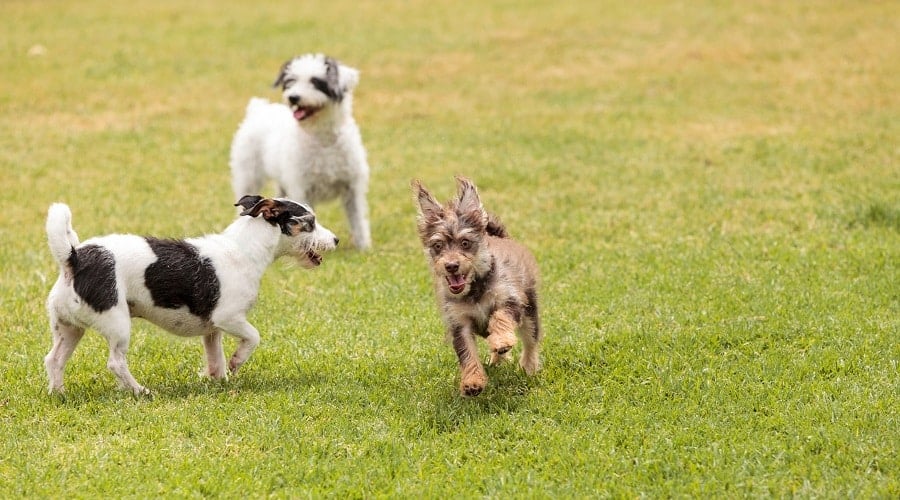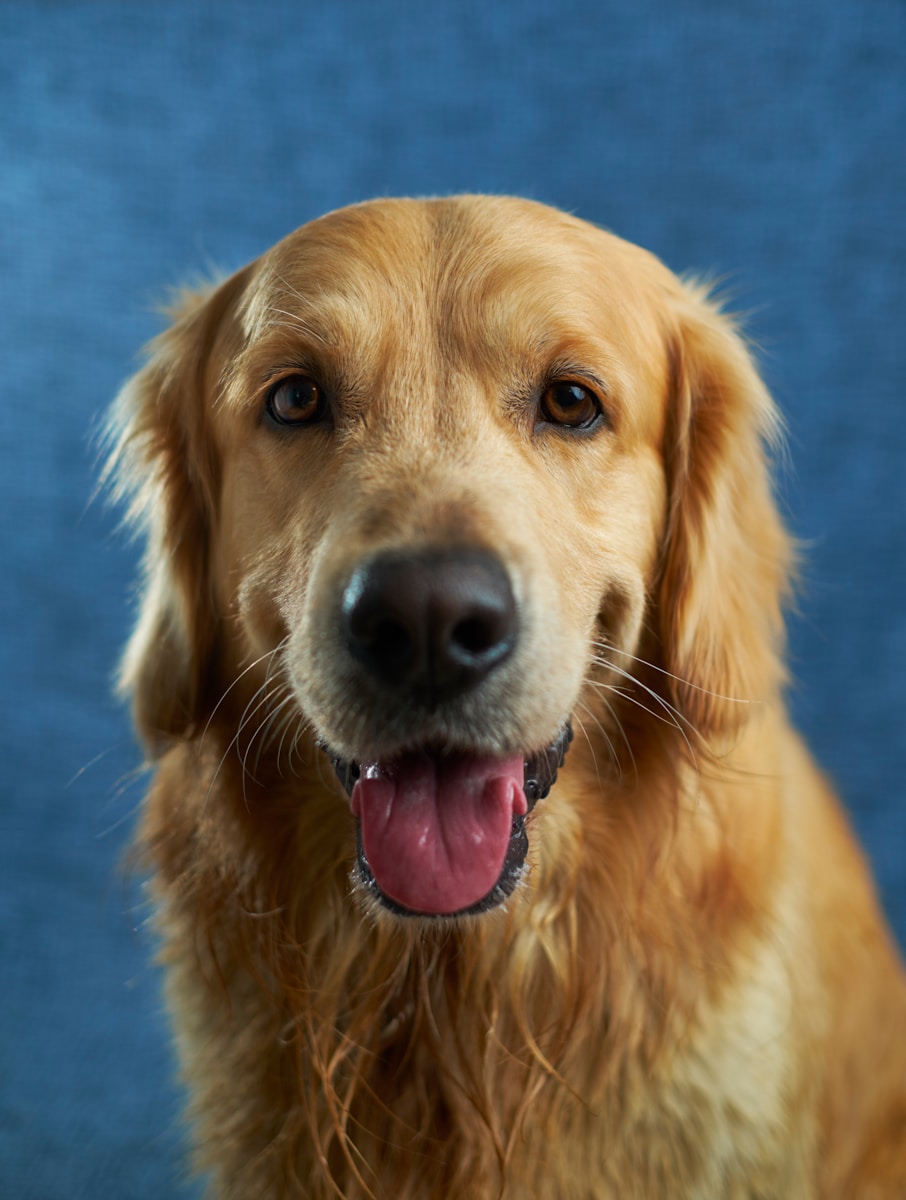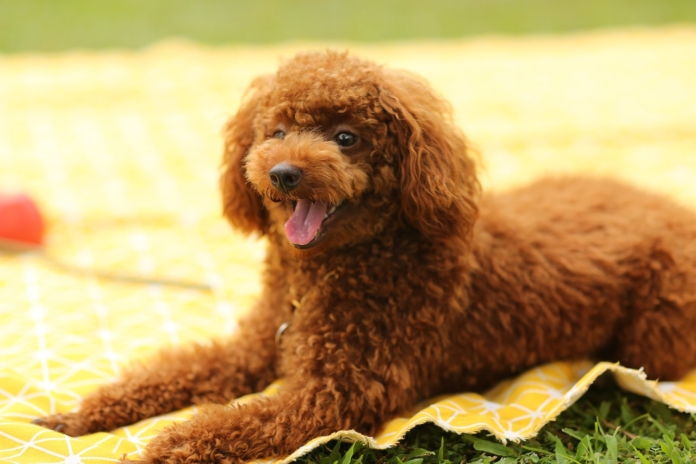Good citizenship
Canine Journal’s article on how to be a responsible dog park visitor offers tips on keeping your dog and the community safe.
Ensuring your dog’s health and vaccinations
Awareness of your dog’s health and vaccinations is key for a successful dog park visit. Before taking your furry friend to the park, make sure they are up-to-date on all their vaccinations. This helps in protecting your dog and other dogs from potential diseases. Common vaccines include rabies, distemper, parvovirus, and Bordetella, which guards against kennel cough.

Aside from vaccinations, regular vet check-ups are essential to ensure that your dog is in good health. Dogs with compromised immune systems, or those recovering from illness, should avoid dog parks until fully healthy. It’s not just about vaccinations; your dog should be parasite-free to prevent the spread of fleas, ticks, and other pesky parasites.
Here’s a quick checklist to ensure your dog is health-ready for the dog park:
- Updated Vaccinations: Ensure all vaccines are up-to-date, including Bordetella for kennel cough.
- Regular Vet Check-Ups: Schedule regular visits to the vet to keep track of your dog’s health.
- Parasite Prevention: Keep your dog free from fleas, ticks, and intestinal parasites.
- Overall Health: Make sure your dog is not showing signs of illness such as coughing, sneezing, or gastrointestinal issues.
Remember, it’s not just about your dog’s health; it’s about the health of the entire dog park community. A healthy dog means a safer, more enjoyable park experience for everyone.
Supervising and managing your dog’s behavior
Supervising your dog at the park is essential for preventing unwanted behavior and avoiding potential conflicts. Dogs can sometimes get overexcited or overstimulated, which may lead to rough play or aggression. Your attentive supervision can quickly de-escalate such situations.
First and foremost, keep an eye on your dog at all times. This means no zoning out or getting too engrossed in conversations with other pet parents. Your dog needs your full attention to stay safe and well-behaved. Always be on the lookout for signs of discomfort or aggression in your dog and others. Early signs can include stiff body language, growling, or raised hackles.
- Stay Alert: Keep a constant watch on your dog to intervene if any issues arise.
- Use Command Training: Make sure your dog responds well to commands like “come,” “leave it,” or “sit,” which can help manage their behavior effectively in unpredictable environments.
- Avoid Distractions: Dog park time is a great opportunity for bonding, so put away your phone to engage fully with your pup and prevent accidents.
If you notice your dog starting to exhibit aggressive behaviors or becoming too rough during play, it’s important to get involved promptly. Call your dog to you and give them a short break if necessary. This helps them to cool down and prevents escalation. By managing their energy levels, you can help ensure positive interactions with other dogs.
“Good communication and training can help dogs understand what is expected of them and can foster a less stressful, more enjoyable experience at the park.” – Dog Behavior Experts
Sometimes, the park can get too crowded, which might overwhelm your dog. If this happens, it’s a good idea to visit during off-peak hours when fewer dogs are around. This provides a more relaxed environment for your pup to socialize and play.
- Off-Peak Hours: Visit the park during less busy times to avoid overwhelming your dog with too many interactions at once.
- Regular Breaks: Ensure your dog takes regular breaks to prevent them from becoming overstimulated or tired.
Regularly reinforcing good behavior with positive reinforcement, such as verbal praise or gentle pats, can significantly impact your dog’s experience at the park. However, it’s wise to avoid using treats within the park, as they can cause jealousy or aggression among some dogs.
Remember, dog parks are not a free-for-all. Responsible dog ownership means being vigilant and proactive in managing your dog’s behavior. This ensures a safe and enjoyable experience for everyone involved.
Safety guidelines and precautions
Taking your dog to the park is undoubtedly fun, but it comes with certain responsibilities to ensure everyone’s safety. Before heading out, familiarize yourself with the park’s safety guidelines and precautions.
First, monitor the park’s environment and evaluate whether it is safe for your dog. Strong heat, cold, or stormy weather can make the park visit hazardous. Pups can be sensitive to extreme temperatures and may suffer from dehydration, frostbite, or heatstroke. Always bring water and ensure there’s a shaded area where your dog can cool off.
Second, maintaining hygiene is paramount. Always carry poop bags to clean up after your dog. Leaving waste behind not only risks fines but can also facilitate the spread of diseases.
Third, familiarize yourself with the two-gate systems commonly used in dog parks. These gates act as a safety buffer to prevent dogs from bolting out of the park. Make sure to close the gates securely when entering or exiting.
Let’s take a look at a simple table summarizing critical safety measures:
| Safety Measure | Details |
| Check Weather Conditions | Avoid extreme temperatures and storms; bring water and shade provisions. |
| Use Poop Bags | Always clean up after your dog to prevent the spread of diseases and avoid fines. |
| Understand Two-Gate System | Ensure gates are securely closed when entering or exiting. |
One often-overlooked safety aspect is the presence of potentially harmful plants or objects within the park. Broken glass, sharp objects, or even toxic plants can pose a real danger to your dog. Older parks or those less maintained could have these hidden hazards, so a quick scan of the area upon arrival can be very beneficial.
Another vital aspect is ensuring that you’re equipped to handle minor emergencies. Bringing along a basic first aid kit specifically designed for dogs can be a lifesaver in case of minor cuts or bruises.
Do you ever wonder what other hidden dangers might lurk in your dog’s favorite park? Next time you’re there, take a closer look. You might find something surprising! Encourage your fellow park-goers to be vigilant as well, creating a safer environment for all.
Adopting these safety guidelines ensures that your dog enjoys a playful, stress-free park experience. It also fosters a responsible dog park community, making visits pleasant for everyone involved.
Appropriate social interactions and boundaries
One of the keys to a great dog park experience is understanding appropriate social interactions and boundaries. It’s important for dogs to engage in play, but recognizing what’s acceptable behavior and what’s not can make all the difference. Here are some guidelines to help you and your dog navigate these social situations.
Respect Other Dogs and Owners: Not all dogs have the same level of comfort or social skills. Just like people, dogs have different temperaments. Respect the space and signals of other dogs, and if someone asks you to keep your dog away, do so immediately. It’s all about keeping things peaceful and enjoyable for everyone.
Proper greetings are essential for dogs in any social setting. When dogs meet, it’s natural for them to sniff each other, especially around the face and rear. This is normal behavior, but owners should monitor these interactions to prevent them from escalating into a confrontation. If introductions seem tense or one dog appears uncomfortable, it’s best to separate them calmly and try again later.
Look for Play Signals:
Dogs have specific body language to signal that they want to play:
- Play Bows: A play bow, where a dog stretches their front legs out and sticks their rear in the air, is an invitation to play.
- Bouncy Movements: Dogs often move with a bouncy gait when they are in a playful mood.
- Wagging Tails: While a wagging tail generally means a dog is happy, context matters. A wagging tail held high can signal excitement, while one held low may indicate submission.
If your dog exhibits any behaviors that potentially threaten peace at the park, such as growling, showing teeth, or stiff body posture, it’s time to intervene. Recognizing these signs early can prevent conflicts before they start. Remove your dog from the situation until they’ve calmed down, and consider ending your visit if the behavior continues.
Sometimes dogs need a time-out to relax and reset. If you notice your dog becoming overstimulated or overly hyper—characterized by inability to focus, excessive barking, or rough play—it may benefit them to take a few minutes of quiet time outside the gated area. This can help prevent accidental injuries or conflicts.
Boundary Training:
Boundary training doesn’t stop at the front gate:
- Stay Close: Encourage your dog to stay within a manageable distance so you can intervene if necessary.
- Recall Commands: Train your dog with strong recall commands like “come” or “here” to ensure they return to you promptly when called.
- Avoid Problem Areas: Steer clear of areas where problems are frequent, like entrances or specific corners of the park that may create territorial issues.
Reading the Room:
A vital skill for any dog owner at the park is to read the atmosphere:
- Watch for Group Dynamics: Notice if a particular group of dogs is dominating the park space and how your dog reacts to this.
- Identify Bullying Behavior: Watch out for dogs that might be bullying others, including your own, and speak to the owner or remove your dog if needed.
- Take Note of Friendly Faces: Recognize which dogs your pup plays well with and seek them out for future playdates.
Avoid the common mistake of letting your dog run wild without any supervision. Remember, you are responsible for their actions. By being proactive and understanding these social nuances, you help create a fun and safe environment for all the dogs and their owners.
Dog parks are designed for enjoyable interaction and play, but it’s down to each visitor to ensure that their dog behaves appropriately. Awareness and respect for social dynamics can lead to countless positive park experiences, helping your dog develop healthy social skills while having a blast.
Essential park maintenance and responsibility
Maintaining cleanliness and taking responsibility at the dog park creates a pleasant and safe environment for everyone. As a dog owner, you play a significant role in upholding these standards and ensuring the park remains a welcoming place for all dogs and their owners.
First and foremost, always clean up after your dog. Bring enough poop bags to pick up after them and dispose of the waste properly. Many parks provide waste bins and bag dispensers, but it’s wise to have your own supply just in case. Cleanup is not just about aesthetics; it helps prevent the spread of diseases and keeps the park a sanitary place for dogs to play.
- Always Bring Poop Bags: Carry a sufficient number of bags and use them to pick up your dog’s waste immediately.
- Proper Disposal: Ensure you dispose of the waste in designated bins to keep the park clean.
Beyond cleaning up after your dog, pay attention to any damage they might cause, such as digging holes or chewing on park equipment. These actions can create hazards for other dogs and people. If your dog starts digging, politely fill the hole back in before you leave.
- Repair Holes: Fill in any holes your dog digs to prevent tripping hazards.
- Respect Park Equipment: Ensure your dog doesn’t damage any of the park facilities.
Another responsibility is ensuring your dog does not harass wildlife or destroy plants in the park. While it’s natural for dogs to be curious, keeping them off landscaped areas and discouraging chasing of smaller animals can help preserve the park’s environment and ensure it remains a welcoming place for all.
- Protect Park Flora and Fauna: Prevent your dog from damaging plants or chasing wildlife.
- Use Designated Areas: Stick to the areas meant for dog play to avoid disrupting the park’s ecosystem.
In addition, ensure you are closing gates properly as you enter and leave the dog park. This small step prevents dogs from escaping and helps maintain the park’s security. Most dog parks have a two-gate system to add an extra layer of safety, and leaving gates open can put all dogs at risk.
- Close Gates: Always ensure gates are securely closed when entering or exiting to prevent dogs from escaping.
- Check Two-Gate Systems: Take advantage of the dual-gate setup for added safety.
Finally, fostering a sense of community among park-goers can also contribute to responsible park maintenance. Encourage others to follow these guidelines and politely remind anyone who might forget. Working together ensures the park remains a delightful place for dogs and their owners.
- Encourage Community Efforts: Help maintain high standards by motivating fellow dog owners to clean up and take care of the park.
- Polite Reminders: Gently remind others if they forget to clean up or close the gates properly.
For a comprehensive guide on dog park etiquette, visit Canine Journal.

